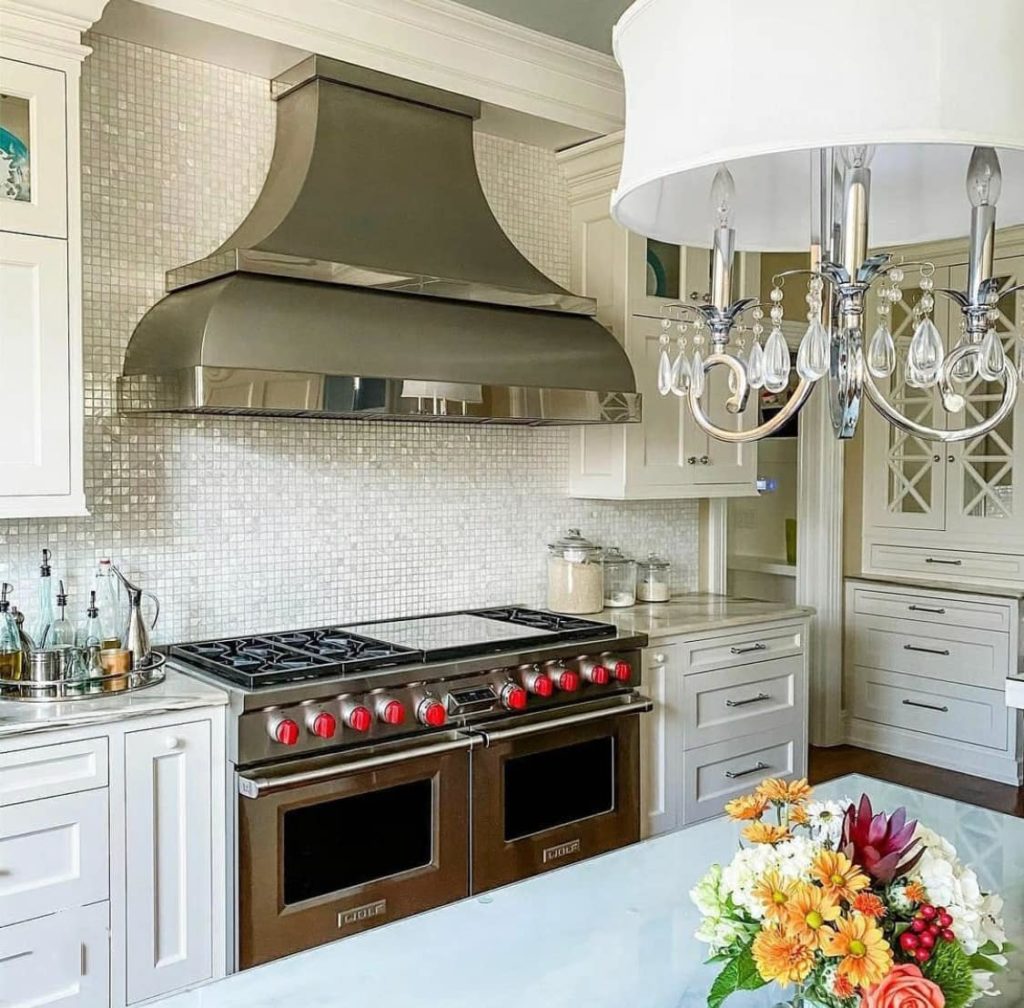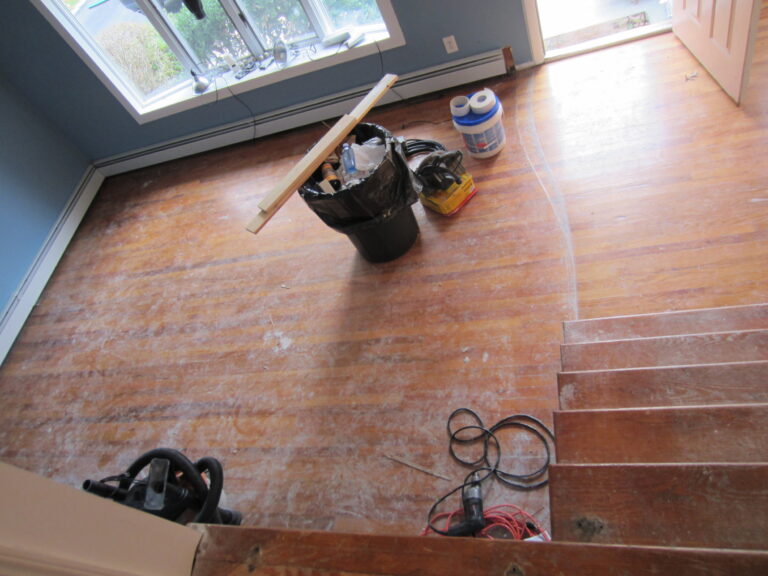How Does a Ductless Range Hood Work
A ductless range hood is a type of exhaust system that does not require the use of ductwork. Instead, it uses a fan to draw air through a filter and then vents it back into the room. This makes it an ideal choice for kitchens that do not have access to an external wall or vent.
If you’re looking for a new range hood, you may be considering a ductless option. But how do these hoods work?
Ductless range hoods work by drawing air in from the stovetop and filtering it through a charcoal filter.
The filtered air is then expelled back into the kitchen, without the need for ductwork.
One advantage of ductless range hoods is that they can be installed in places where traditional ducted hoods wouldn’t be possible, like in apartments or condos. They’re also less expensive to install than their ducted counterparts.
Another advantage is that they don’t require much maintenance. The filters only need to be replaced every few months, and there’s no need to clean messy ductwork.
Ducted Vs Ductless Range Hood
If you’re in the market for a new range hood, you may be wondering whether to choose a ducted or ductless model. Both have their pros and cons, so it’s important to understand the difference before making your decision.
Ducted range hoods are connected to an external vent, which means they can remove smoke and odors from your kitchen more effectively.
However, they can be more difficult to install, and they may not be suitable for all home designs.
Ductless range hoods don’t require an external vent, but they may not be as effective at removing smoke and odors. They’re usually easier to install, however, and can be a good choice if you’re not able to use a ducted system.
How to Install a Ductless Range Hood
If you’re looking to install a ductless range hood, there are a few things you’ll need to keep in mind. First, make sure that the area where you’ll be installing the range hood is free of any obstructions. Next, mark the center of the opening on the wall or ceiling where the range hood will be installed.
Using a level, draw a horizontal line at this mark. This will be your reference line for installing the range hood.
Now it’s time to start installation by attaching the mounting plate for the range hood to the wall or ceiling.
Use screws appropriate for your surface material and drive them into place along your reference line. With the mounting plate in place, it’s time to attach therange hood itself. Line up the ductwork on the back ofthe range hood withthe opening in themounting plate and use screws to secure it in place.
Once everything is tight and secure, turn on power tothe unit andtest it outto make sureit’s working correctly.
That’s all there is to it! By following these simple steps you can easily install a ductless range hood in your home without any hassle.
Best Ductless Range Hood
If you’re in the market for a new range hood, you may be wondering if a ductless range hood is the way to go. Ductless range hoods have many advantages over traditional ducted models, including improved energy efficiency and easier installation. In this blog post, we’ll break down everything you need to know about ductless range hoods so you can decide if one is right for your kitchen.
What is a Ductless Range Hood?
A ductless range hood is a type of range hood that doesn’t require ventilation ducting. Most range hoods are designed to ventilate cooking fumes and smoke out of the kitchen through an external wall or roof vent.
Ductless range hoods, on the other hand, use an internal fan to circulate air and remove odors from the kitchen. This makes them much more energy-efficient than traditionalducted models.
There are two main types of ductless range hoods: recirculating and exhaust-only.
Recirculatingrange hoods come with charcoal filters that trap grease and odors before they’re circulated back into the kitchen. Exhaust-onlyrangehoods expel contaminated air directly outside without filtering it first. These types of rangehoods are not as common because they can cause drafts in the kitchen when they’re running.
However, they are more effective at removing strong cooking smells from the kitchen quickly.
deciding factor when choosing between these two types of ductlessrangehoodsis whether your kitchen has an external vent that can be used for ventilation. If not, then an exhaust-only model will likely be your only option.
Do Ductless Range Hoods Remove Smoke
If you’re looking for a range hood that can effectively remove smoke from your kitchen, then a ductless range hood is a great option. Ductless range hoods work by drawing in smoke and other airborne particles, then filtering them before recirculating the air back into the kitchen. This means that smoke and other odors are removed from the air, making it safer and more pleasant to cook in your kitchen.
Ductless range hoods are also very easy to install, since they don’t require any ductwork. They’re also much quieter than traditional range hoods, so you won’t have to worry about disturbing your family or neighbors while cooking.
How to Convert Ducted Range Hood to Ductless
Ducted range hoods are the most common type of range hood. They are installed above the cooktop and vented to the outside through a duct in the wall or ceiling. Ductless range hoods, also called recirculating range hoods, don’t have a duct.
Instead, they have a filter that captures smoke and odors and recirculates clean air back into the kitchen.
If you’re remodeling your kitchen and considering a ductless range hood, you may be wondering if it’s possible to convert your existing ducted range hood to ductless. The answer is yes!
Here’s how:
1. Remove the old range hood and disconnect the ductwork from the house. If your old range hood was vented through the roof, you’ll need to seal off the hole left by the vent pipe.
2. Install your new ductless range hood according to manufacturer instructions. Most models mount on the wall above the cooktop just like a conventionalrangehood . Some models can be recessed into cabinets for a sleek, built-in look .
Choose a location that allows easy access to filters for cleaning . You may need help from someone else to lift and position heavy units . Follow all safety precautions when working with tools near an open flame .
3 Be sure to read all instructions before starting any work . 4 After installation is complete , turn on power at circuit breaker panel5 Test unit by turning it on 6 Check area around unit for any leaks 7 If leaks are present , investigate source and make necessary repairs 8 Once everything is functioning properly , enjoy improved indoor air quality in your home !

Credit: rangecraft.com
Do Ductless Range Hoods Need to Be Vented?
Ductless range hoods are a popular choice for many homeowners because they do not need to be vented. Ductless range hoods work by drawing air through a filters and then recirculating the clean air back into the kitchen. This means that ductless range hoods do not require an external vent or exhaust duct.
Some benefits of ductless range hoods include:
-They are easier to install than vented range hoods because there is no need to run ductwork to the outside of your home.
-Ductless range hoods are more energy efficient than vented range hoods because they do not lose heat through the ventilation system.
-Ductless range hoods can be used in any room of your home, even if there is no existing ventilation system.
How Well Do Ventless Range Hoods Work?
Ventless range hoods are a great option for those who want to save on energy and installation costs. However, there are some downsides to using a ventless range hood. One downside is that they can be less effective at removing smoke and odors from your kitchen.
Additionally, ventless range hoods may not be as effective at filtering out grease and pollutants from the air.
Do Recirculating Range Hoods Actually Work?
A range hood is a ventilation device that is installed above a stove or cooktop in order to remove smoke, grease, odors, and heat from the kitchen. A recirculating range hood is one that does not vent to the outside of the home, but instead recirculates the air back into the kitchen. Many people question whether or not these types of range hoods actually work.
The answer is yes, recirculating range hoods do work. They are designed to remove smoke, grease, and odors from the air in your kitchen. The way they work is by using filters to trap these contaminants and then circulating clean air back into the room.
Some models also have charcoal filters which help to absorb odors.
There are some downsides to using a recirculating range hood though. One is that they can be less effective at removing smoke and grease than vented range hoods.
Another downside is that they can cause the air in your kitchen to become stale if they are not used properly. It is important to make sure you open up windows or use exhaust fans when cooking with strong smelling foods so that the odor does not get trapped inside your home.
Does a Range Hood Have to Be Vented Outside?
Most range hoods need to be vented outside, but there are a few types that don’t. Range hoods remove smoke, grease, and odors from the air in your kitchen while you’re cooking. They come in different designs and styles to fit your kitchen’s decor, but they all have one thing in common: they need to ventilate the air somewhere other than back into your kitchen.
There are two main types of range hoods: ducted and ductless. Ducted range hoods have a fan that pulls the contaminated air through a duct to the outdoors. These are the most effective type of range hood at removing contaminants from the air, but they require an opening in your walls or ceiling to install the ductwork.
Ductless range hoods have a fan that recirculates the air back into your kitchen after it passes through filters to remove contaminants. These don’t require any special installation, but they aren’t as effective at removing contaminants as ducted models.
So, do all range hoods need to be vented outside?
For the most part, yes. But if you can’t or don’t want to install ductwork for a ducted model, then a ductless range hood is a good alternative option.
What is a Recirculating Range Hood?- What is a Ductless Range Hood?
Conclusion
A ductless range hood, also known as a recirculating or ventless range hood, doesn’t require any external venting. Instead, it uses an internal fan to circulate air and remove contaminants. The contaminated air is then filtered through a charcoal filter before being recirculated back into the kitchen.






